VERDUN - Côte de Froideterre - Abri Les Quatres Cheminées - Ouvrage de Froideterre - Bunkers MF 3 - MF 1 - MF 2
Years of visit: 1994, 2005, 2009, 2012
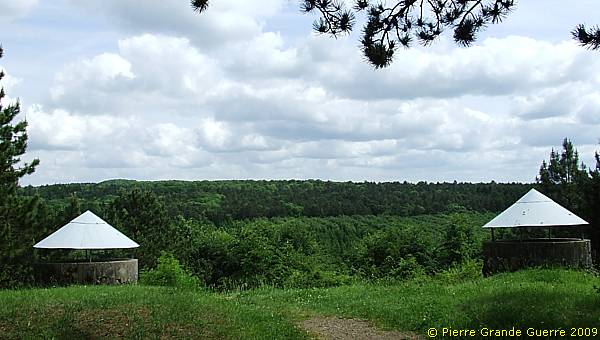
A report of several visits to the height of Froideterre: Abri Les Quatres Cheminées, Ouvrage de Froideterre, Bunkercomplex MF 3, Bunker MF 1, and Bunker MF 2.
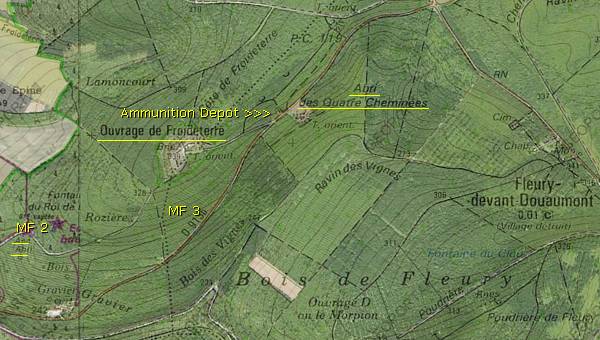
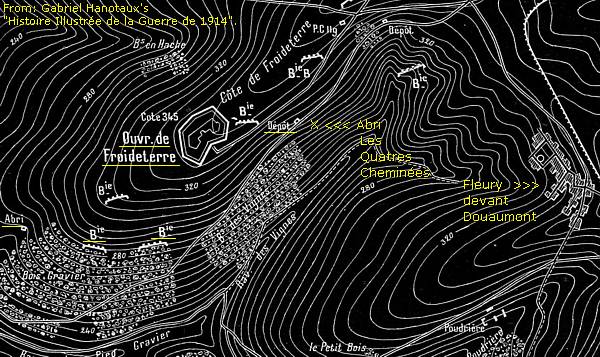
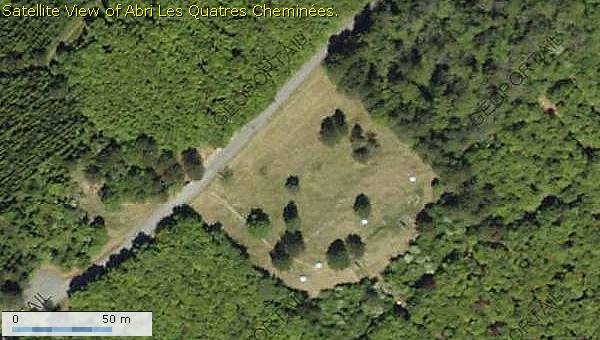
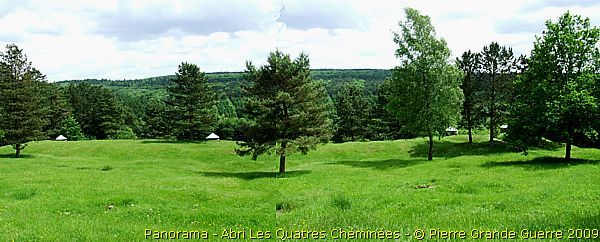
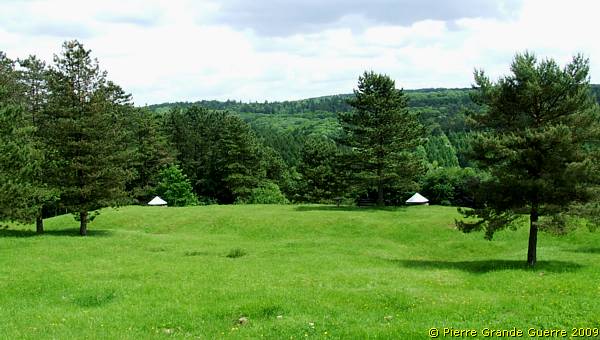
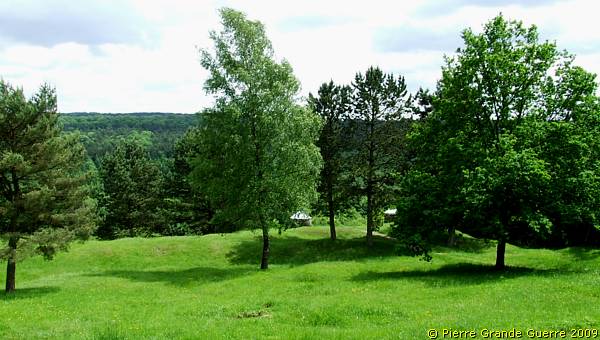
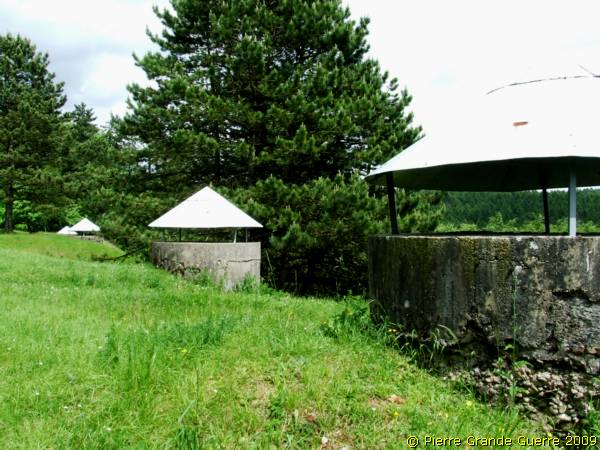
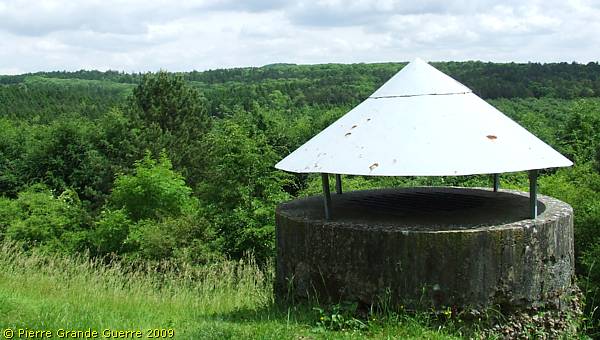
... each one with it’s own 2 ventilation shafts, chimneys.
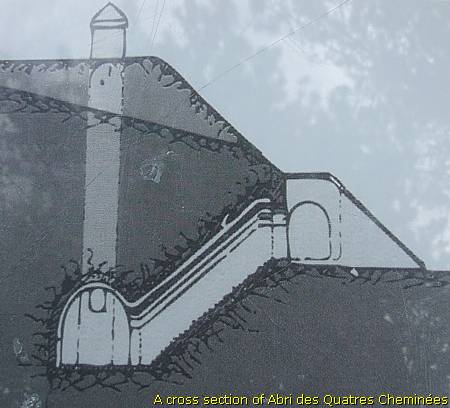
The bunkers served as an “abri”, or shelter for the troops.

The entrance to the left bunker with two guard rooms.

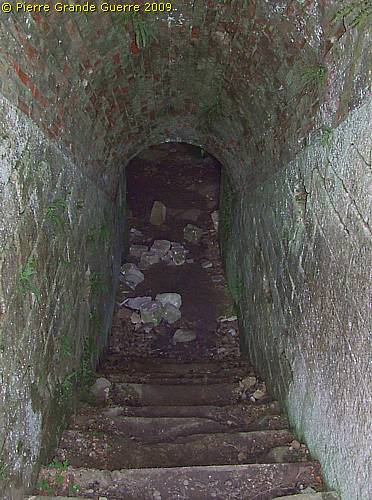
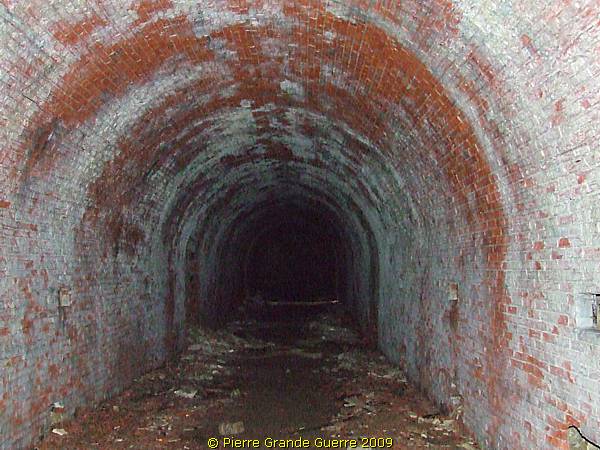
View to the right, to north-east.
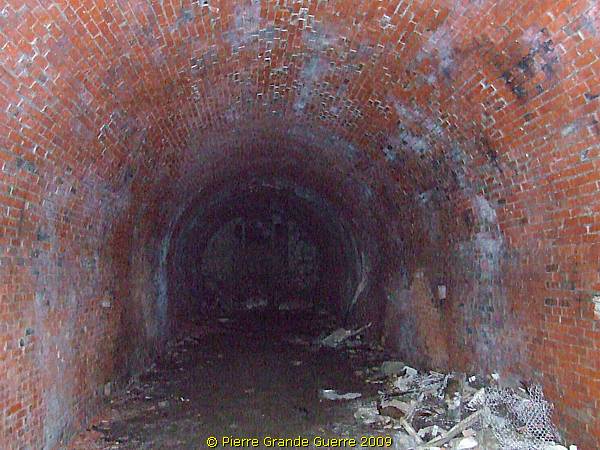
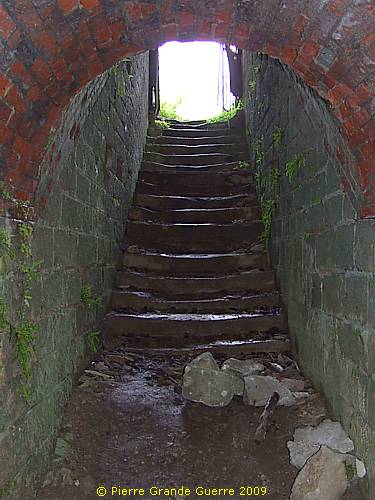
At the foot of the two bunkers stands a memorial.
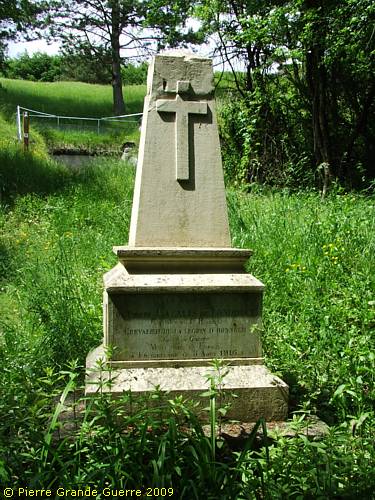
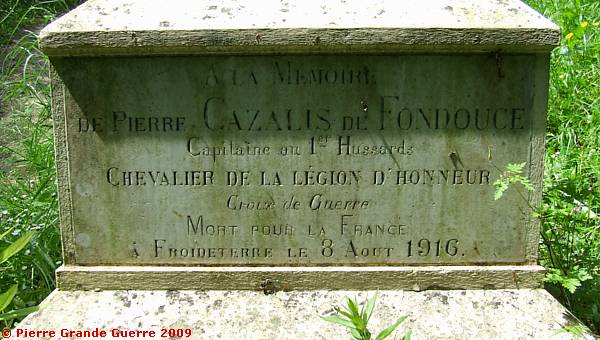
23 June 1916 - Abris Les Quatres Cheminées
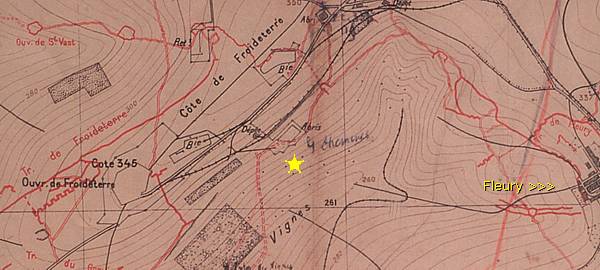
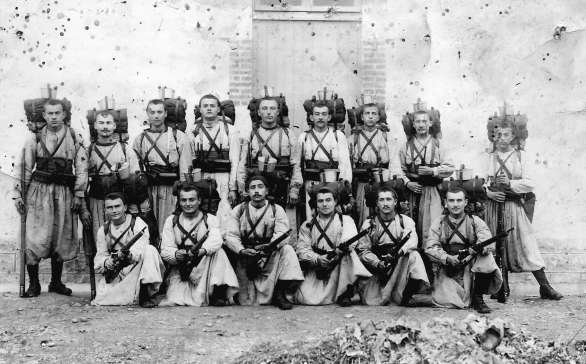
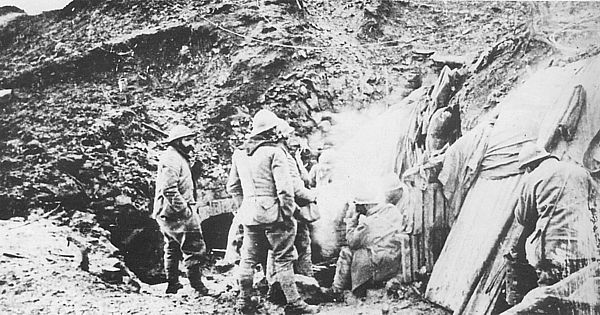
The entrance to the right bunker.
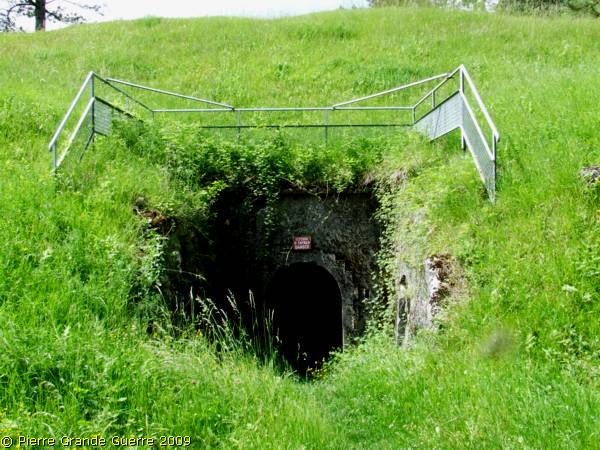
Again two guard rooms at the entrance. Left.
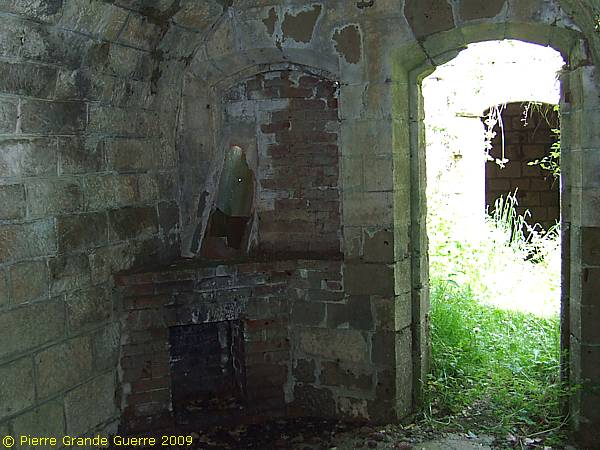
Right.
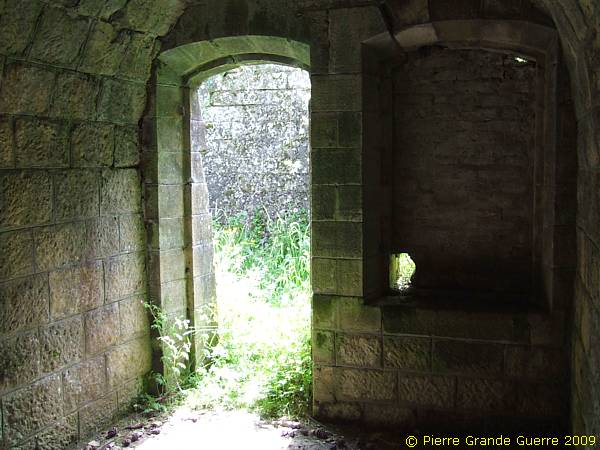
Again I went to down to explore the bunker.
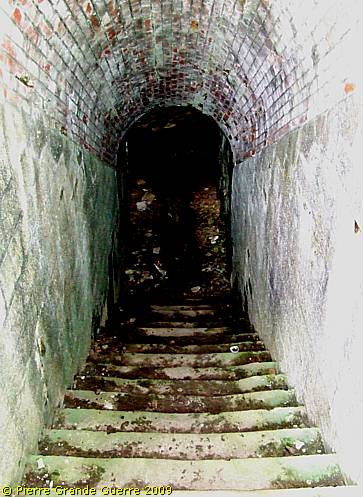
View left.
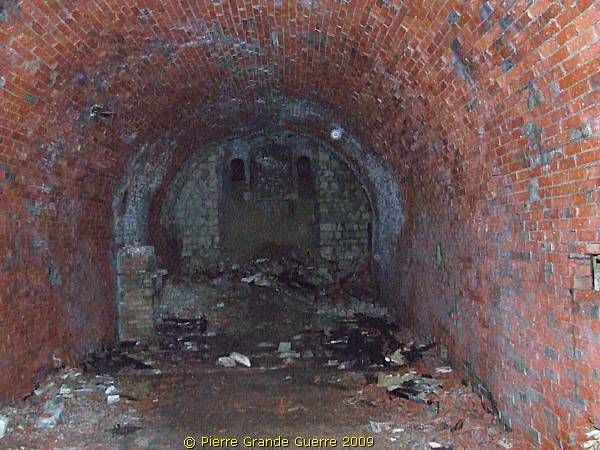
View right.
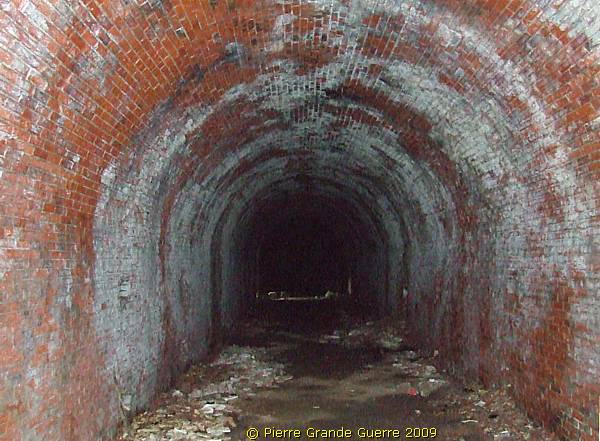
Some last views of the exterior of Abri Les Quatres Cheminées.
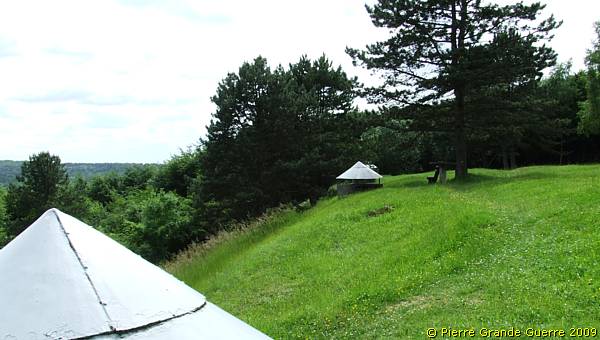
View eastward: the Ravin des Vignes.
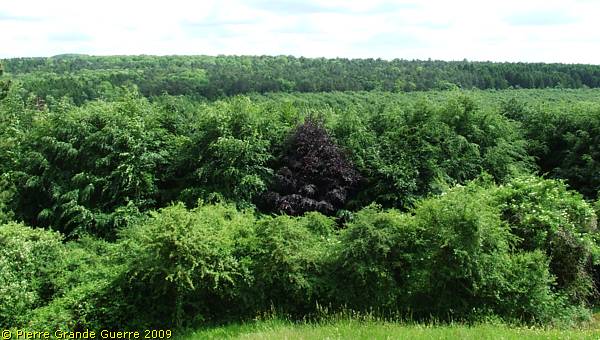
View southward.
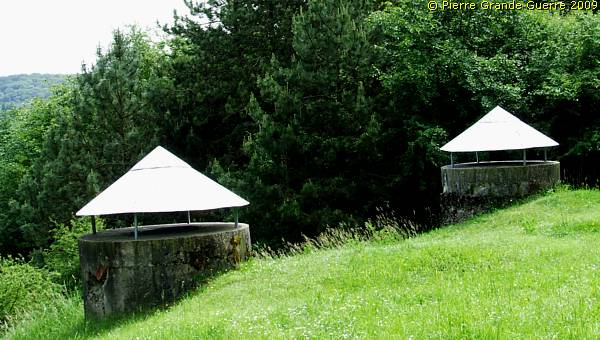
A last view eastward.

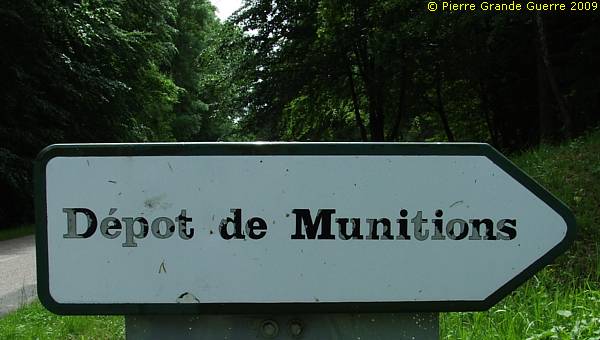
... lies an ammunition depot bunker.
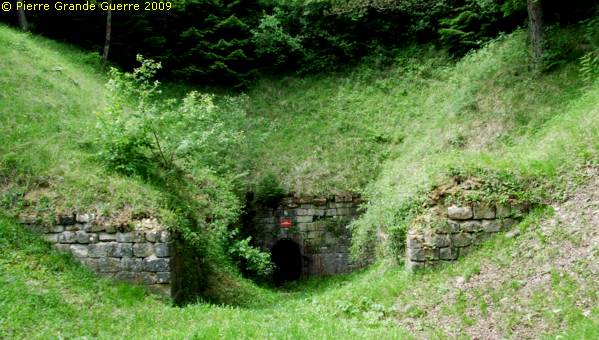
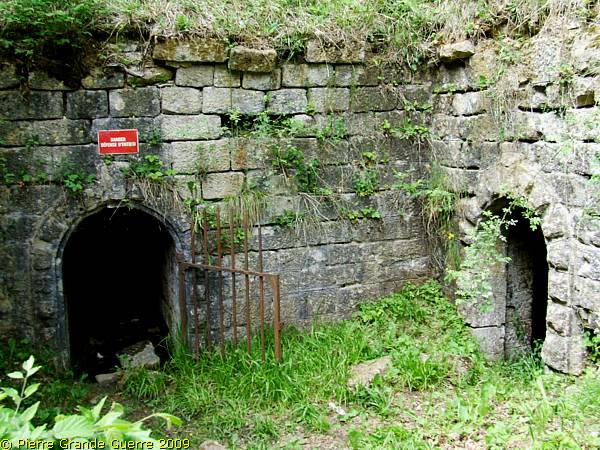
Ouvrage de Froideterre
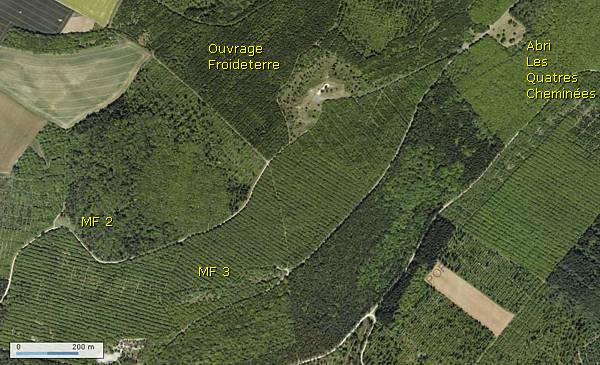

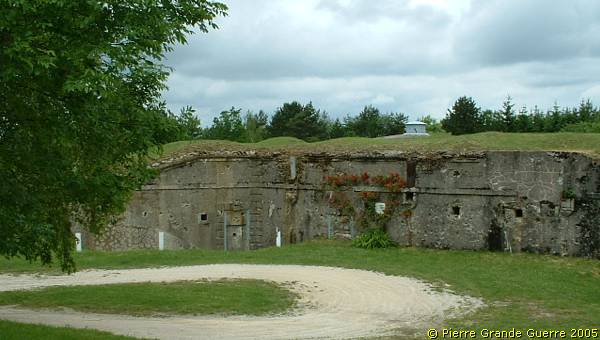
21-23 June 1916 - Attack at Ouvrage de Froideterre
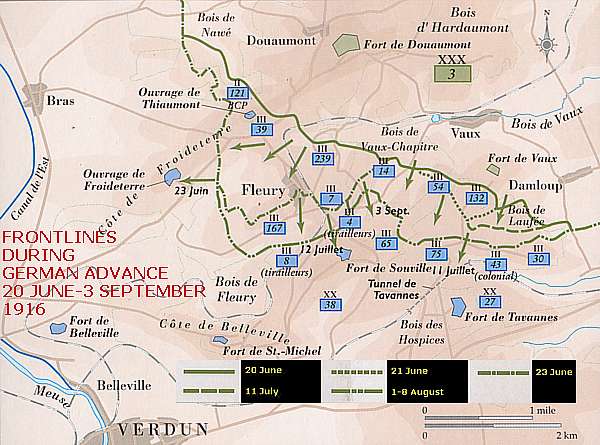
Although the fort never has been captured by the Germans, it has been several times under massive attacks like the one of 21 June, that went on until 23 June 1916. On 21 June the Germans launched an unprecedented, massive artillery bombardment with 320 mm and 420 mm shells. They bombed the sector Thiaumont, the height of Froideterre, Fleury, and Fort de Souville.
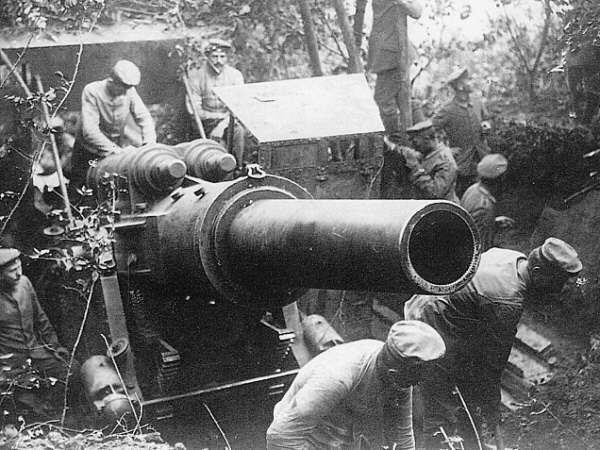
In the evening of 22 June, in final preparation of the infantry-attack, the Germans dropped around 200.000 poison gas shells in this area.
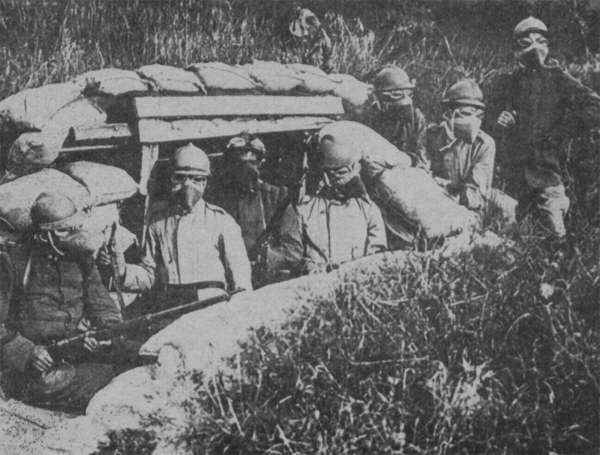
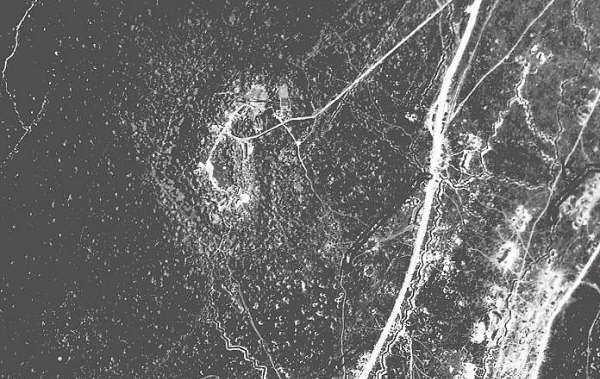
After observing this annihilation, the German generals expected hardly any resistance from the French anymore.
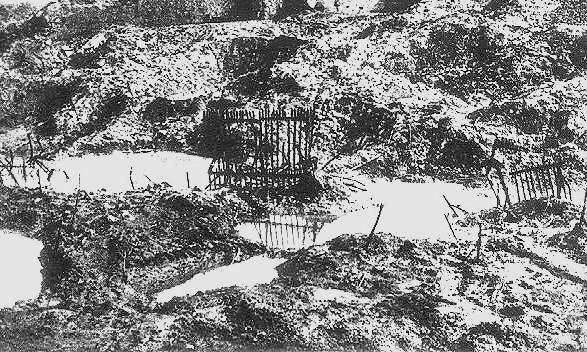
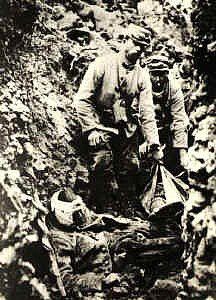
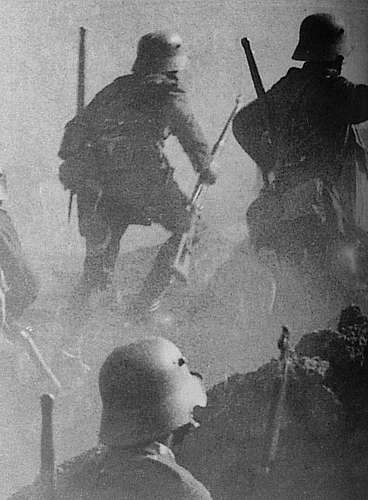
... descended from the north, from the hills at the other side of the Ravin the la Dame and the Ravin des Vignes. The Germands attacked the Côte de Froideterre, leaping from shell hole to shell hole.
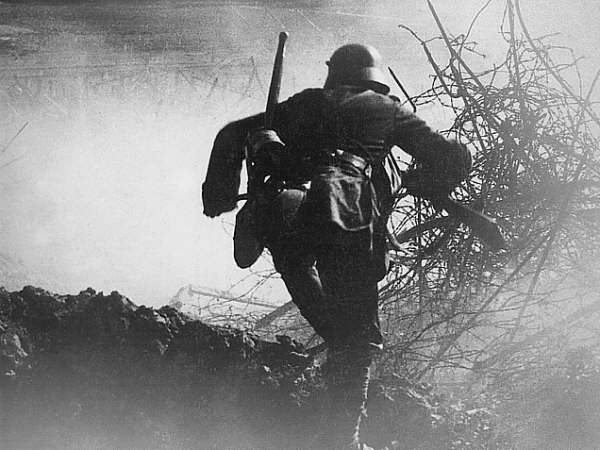
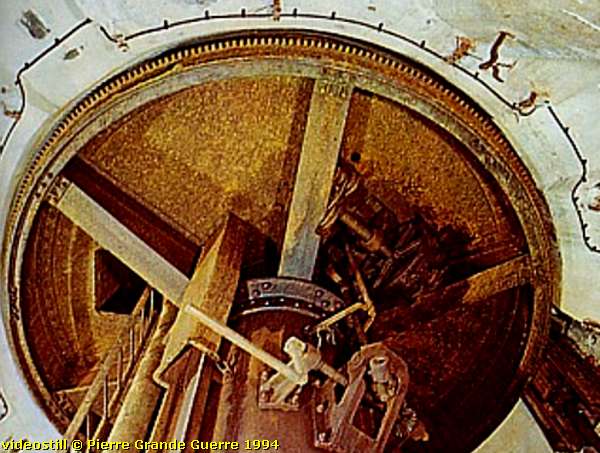
Due to a mechanical problem the machine gun turret refused to lift and turn around, so it could not fire.
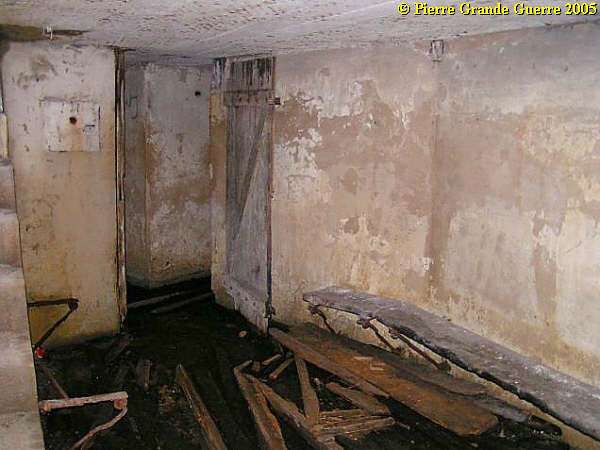
The French succeeded to repair the turret not a second too late, and started firing at the Bavarian mass of troops still moving upwards the slope.
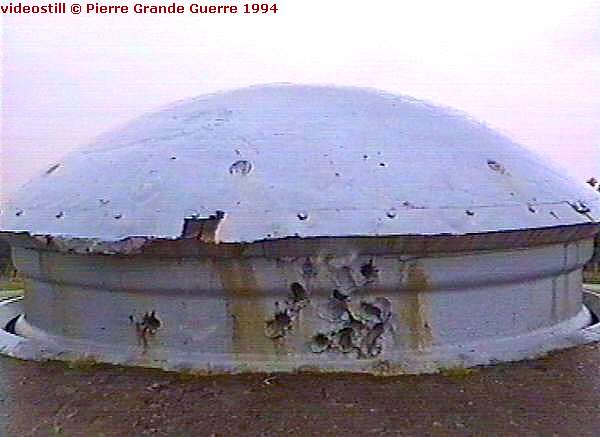
In the city of Verdun panic had broken out. Soon the auxiliaries, the 114e Battailon des Chasseurs Alpins and the 127e Régiment d’Infanterie arrived hastily (sometimes even by cab) from the town to drive away the Germans back to their original positions. Finally it has been a question of minutes or the Germans almost succeeded in taking the Ouvrage de Froideterre.
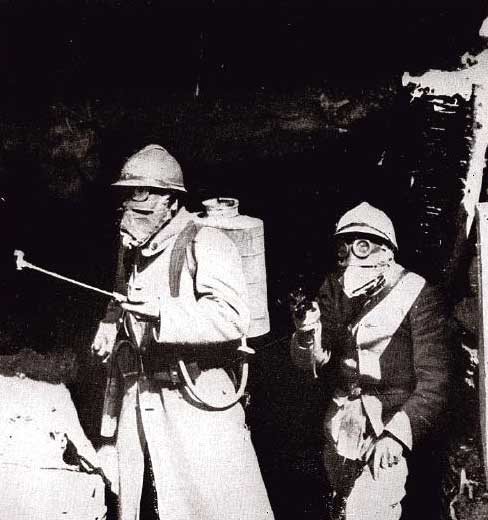
In 2005 I scouted the dark interior of the fortress, ...
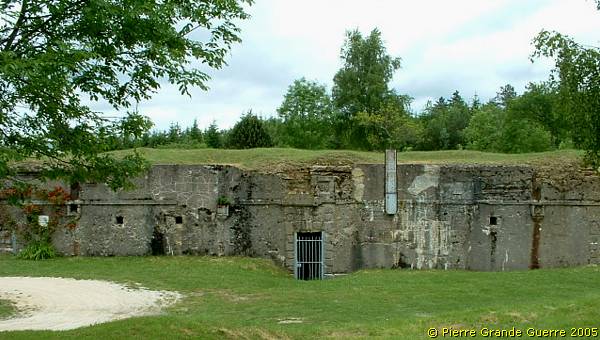
... armed with a torch and of course my camera.

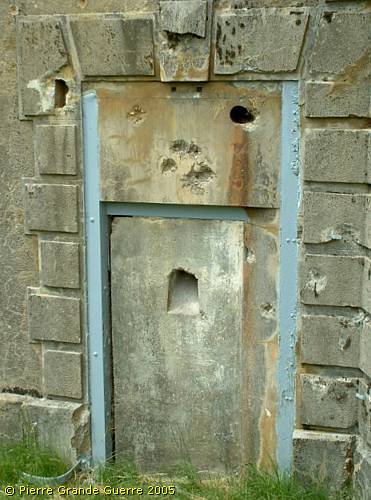
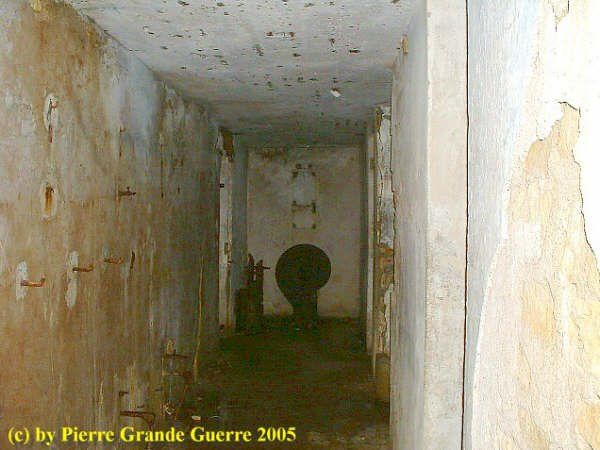
I wandered through some corridors, magasin rooms, ...
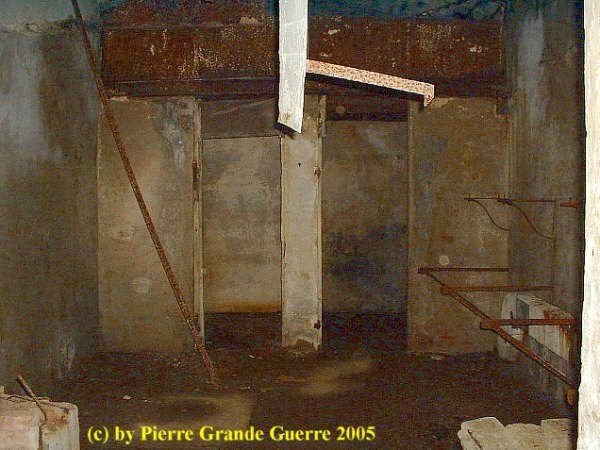
... and dormitory rooms with soldiers bunk beds.

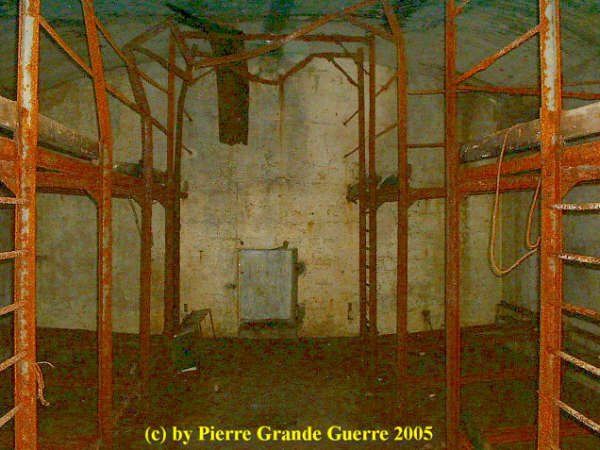
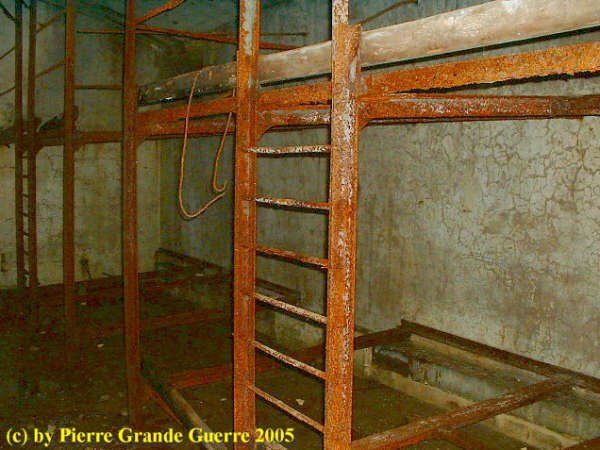
With a last view of Ouvrage de Froideterre ...

.. we continue our route westward to ...
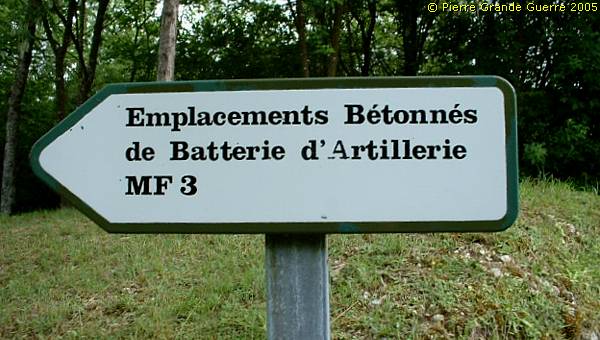
... to the artillery position and ammunition bunkercomplex MF 3 .
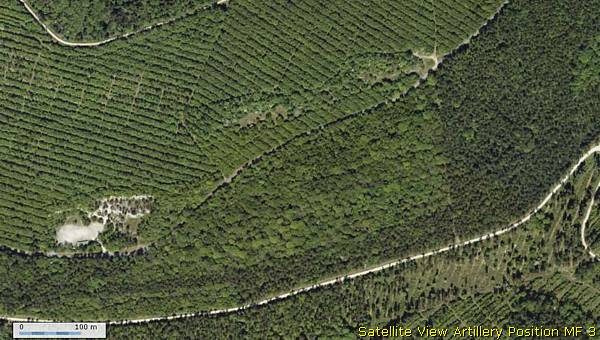

... were not of much use for the French.
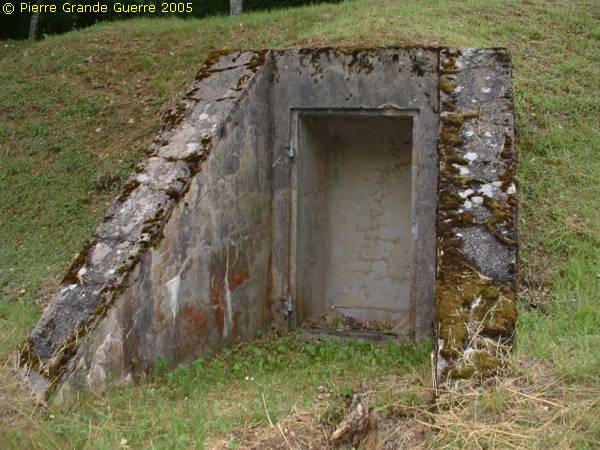
The Germans located the positions of these guns quite early, ...
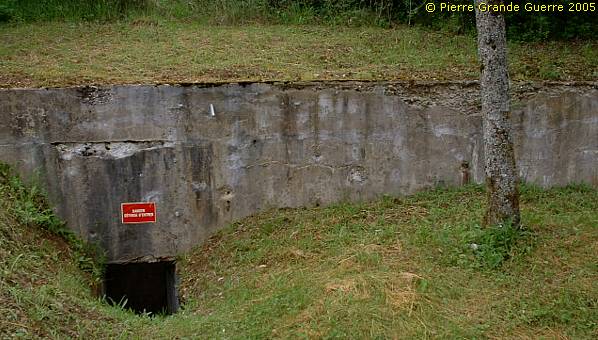
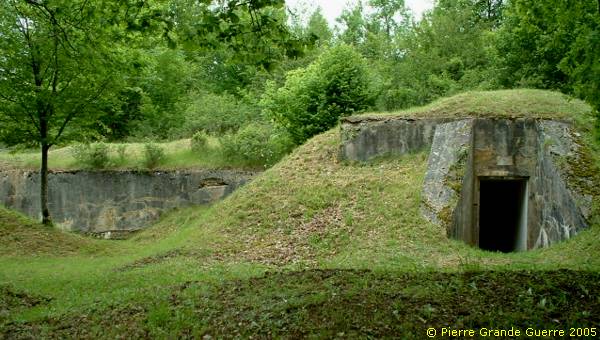
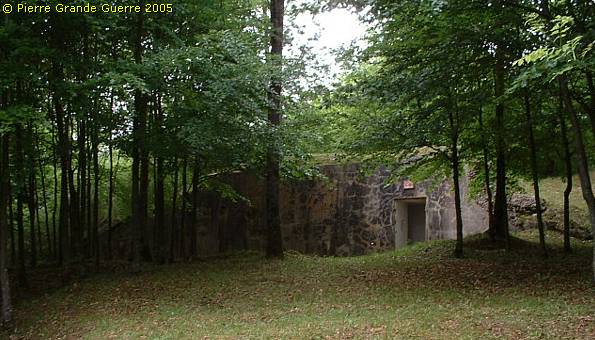
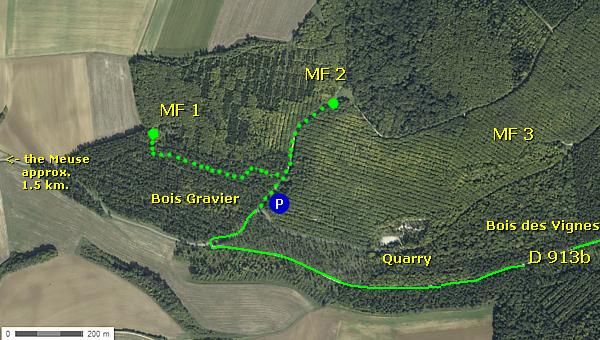
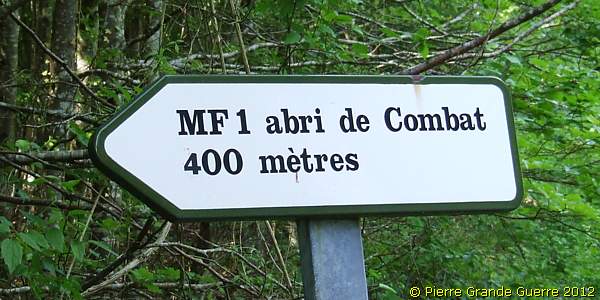
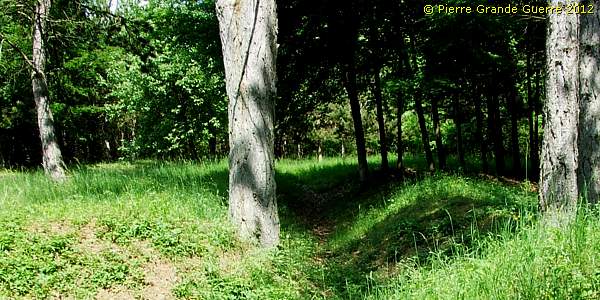
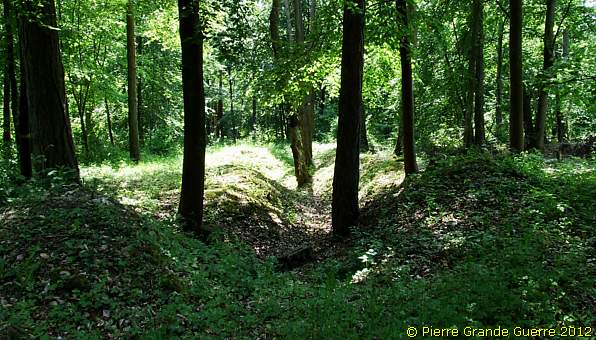
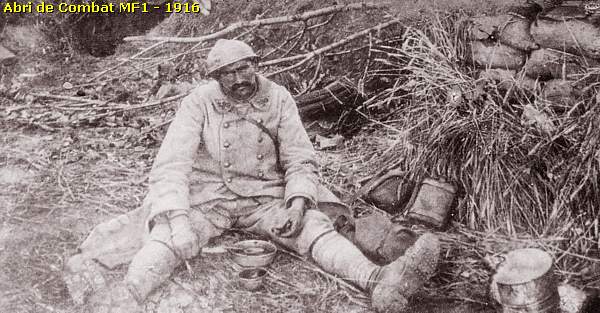
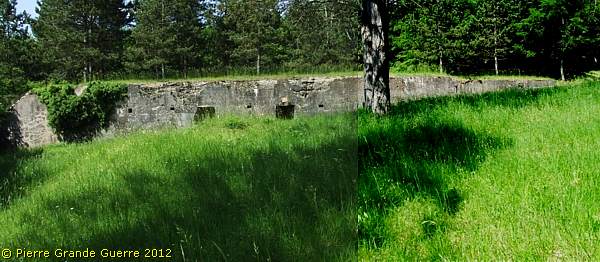
This large bunker possesses three entrances.
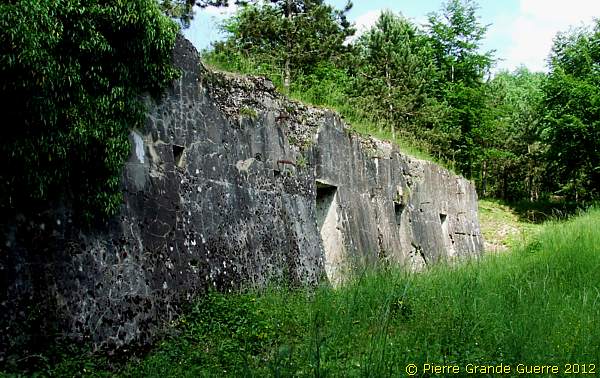
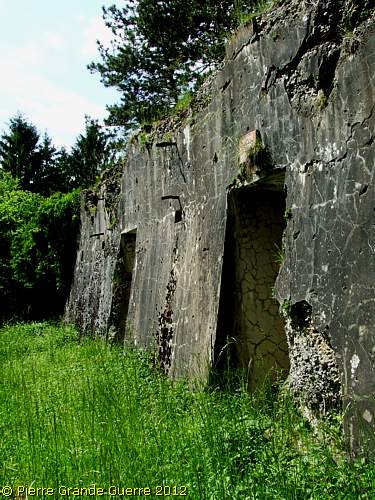
We enter the third and most western entrance.

Our trench dog Bobby is so curious; he already entered the bunker before me.
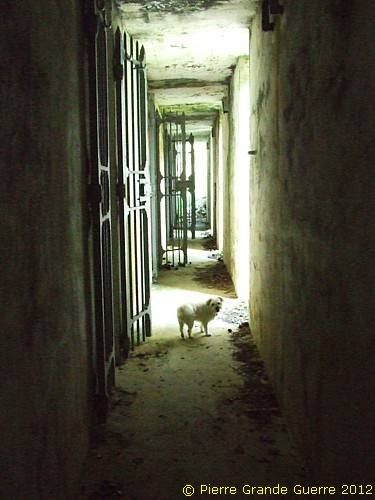

This is probably a part of a ventilation system.
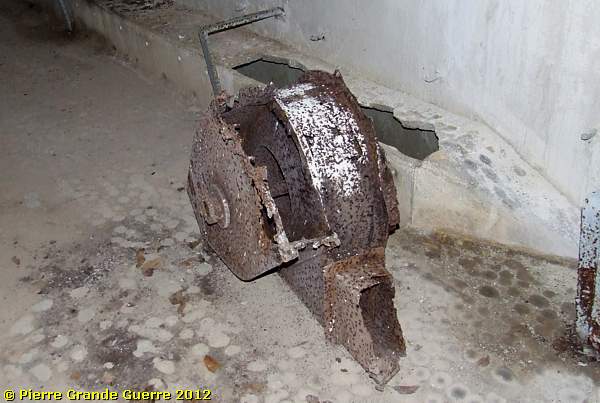
All three halls are connected by two open doorways.
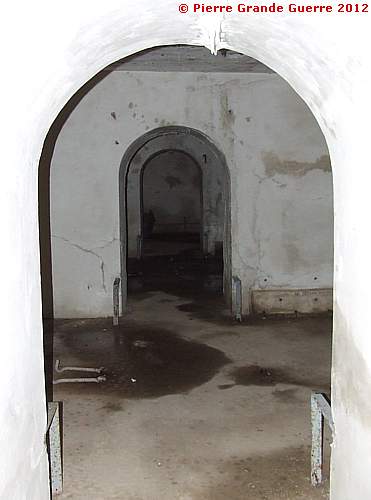
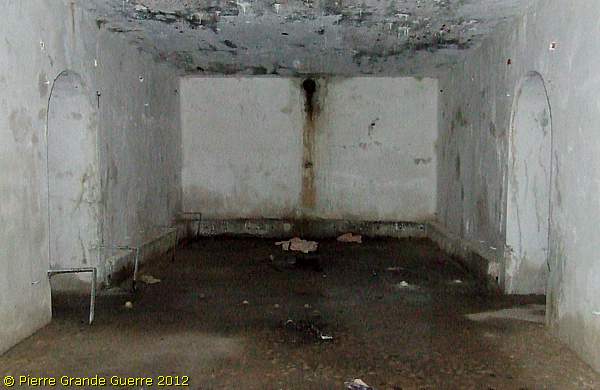
The left or east hall with another relic of a ventilation system.

Bobby and I return outside.
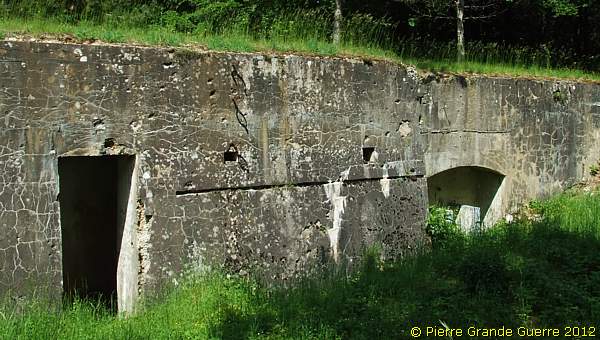
As more often in French military constructions ...
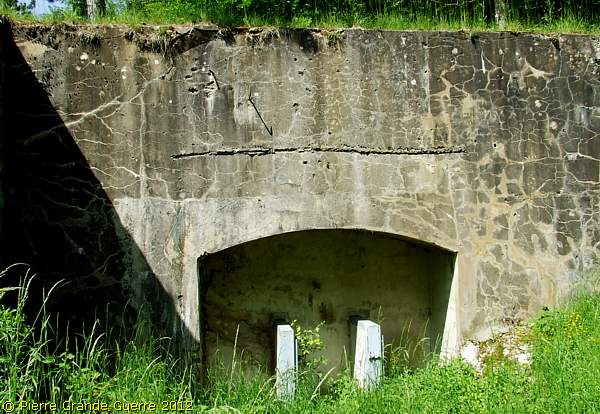
... the latrines are outdoors.

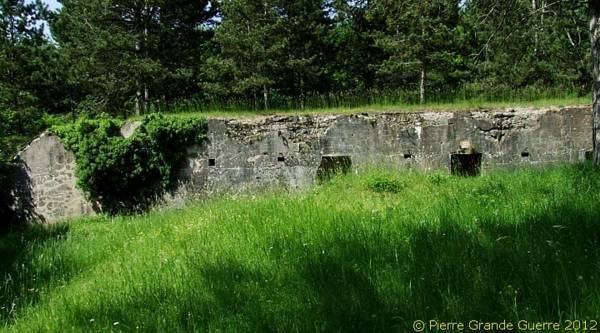
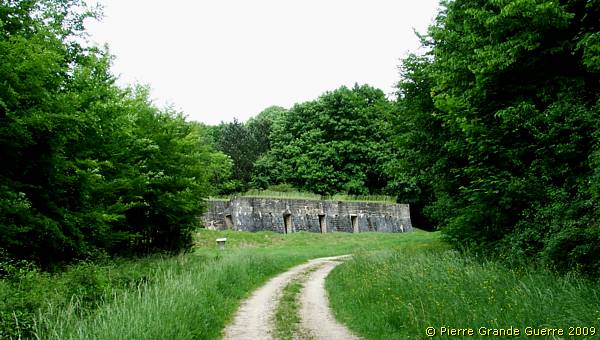
The bunker counts 5 entrances.
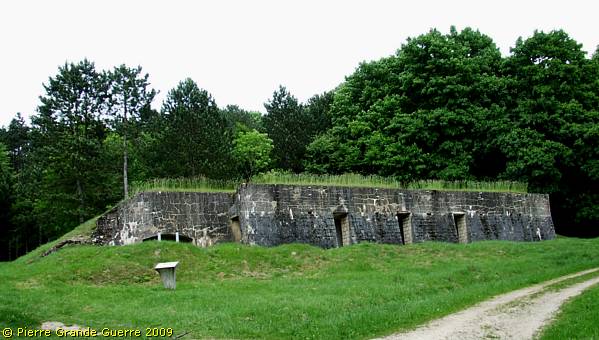
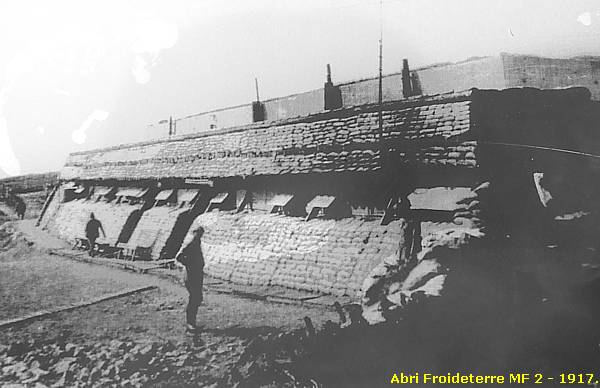
Outdoor latrines.
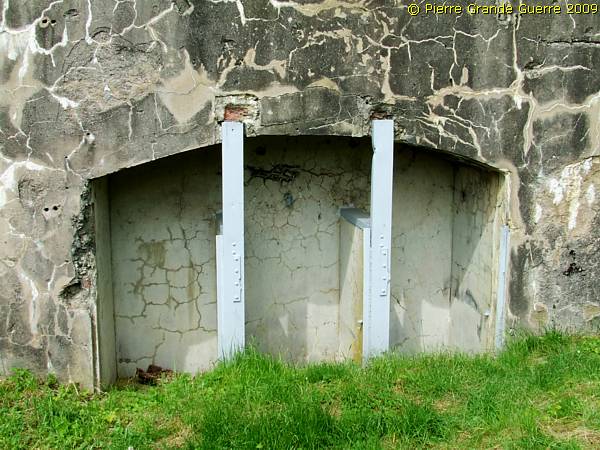
The 5 entrances are connected to a main corridor.
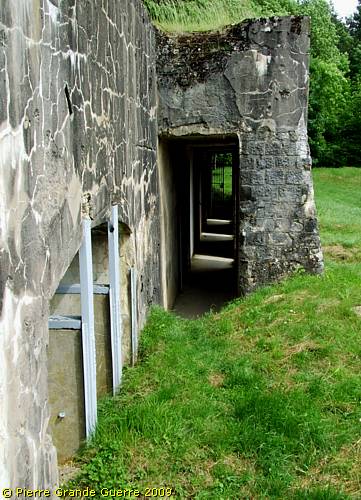
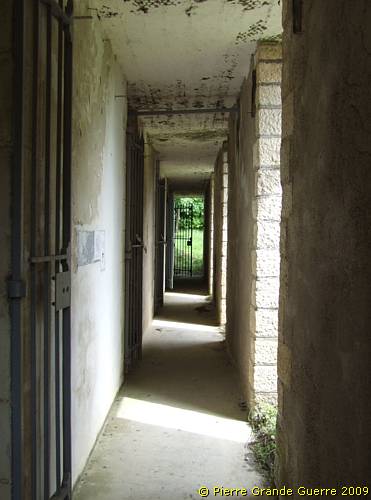
Two identical halls were giving shelter.
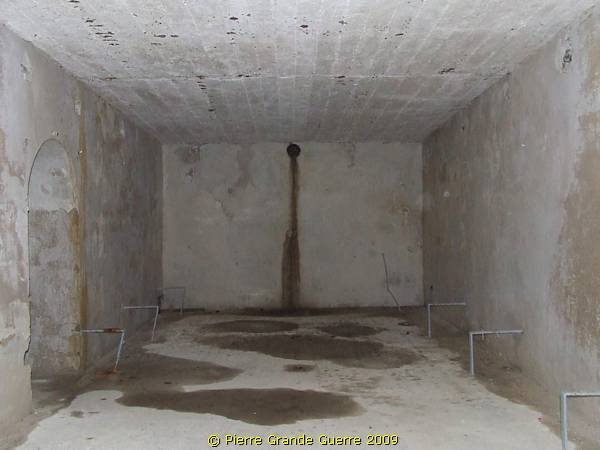

A last view at Abri MF 2.
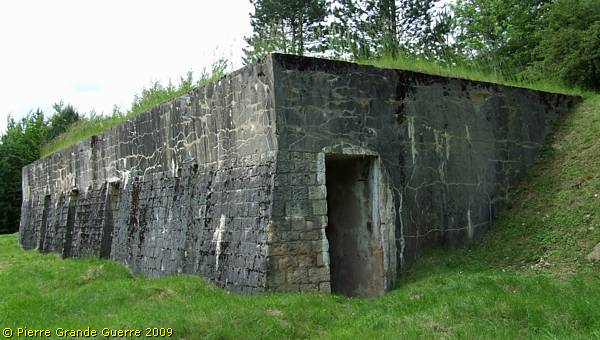
Fleury - Pamart Bunkers - Fort de Souville - Batterie de l'Hôpital
".









